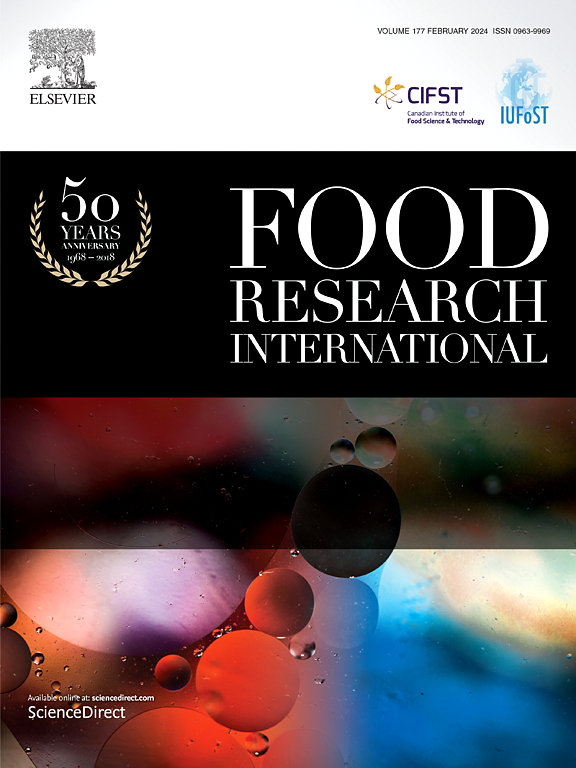Multi-omics joint analysis: Pachymic acid ameliorated non-alcoholic fatty liver disease by regulating gut microbiota
IF 7
1区 农林科学
Q1 FOOD SCIENCE & TECHNOLOGY
引用次数: 0
Abstract
Poria cocos a traditional Chinese medicinal material with both culinary and therapeutic applications, contains pachymic acid (Pac) as one of its main active compounds, which has demonstrated anti-lipid accumulation and hypoglycemic effects. However, its impact on the biochemical changes in the enterohepatic axis induced by a high-fat diet remains poorly understood. This study investigated the protective mechanism of Pac using a high-fat diet-induced non-alcoholic fatty liver disease (NAFLD) mouse model. 16S rRNA sequencing of gut microbiota revealed that Pac administration reduced the Firmicutes to Bacteroidetes ratio, restored Akkermansia abundance, decreased Desulfovibrio and Streptococcus population, and ameliorated gut dysbiosis. Concurrently, Pac treatment reduced the expression of hepatic inflammatory factors by mainly adjusted LPS/TLR4/MYD88/NFκB pathway. Liver transcriptome analysis indicated that Pac primarily affects genes involved in lipid metabolism, apoptosis, and inflammatory responses. Specifically, Pac inhibited FASN, SREBP1c, and SCD1 expression while upregulating PPARα and CPT1α, thereby improving high-fat diet-induced hepatic steatosis in mice. Additionally, Pac treatment reduced hepatocellular apoptosis. Non-targeted liver metabolomics analysis following Pac intervention revealed increased levels of acylcarnitine and oleic acid. Collectively, these findings suggest that Pac alleviates high-fat diet-induced hepatic lipid accumulation and damage by modulating gut microbiota, lipid metabolism, inflammation, and apoptosis. This comprehensive study provides valuable insights into the therapeutic potential of Pac and offers a reference for the development and utilization of Poria cocos resources in addressing NAFLD.

求助全文
约1分钟内获得全文
求助全文
来源期刊

Food Research International
工程技术-食品科技
CiteScore
12.50
自引率
7.40%
发文量
1183
审稿时长
79 days
期刊介绍:
Food Research International serves as a rapid dissemination platform for significant and impactful research in food science, technology, engineering, and nutrition. The journal focuses on publishing novel, high-quality, and high-impact review papers, original research papers, and letters to the editors across various disciplines in the science and technology of food. Additionally, it follows a policy of publishing special issues on topical and emergent subjects in food research or related areas. Selected, peer-reviewed papers from scientific meetings, workshops, and conferences on the science, technology, and engineering of foods are also featured in special issues.
 求助内容:
求助内容: 应助结果提醒方式:
应助结果提醒方式:


